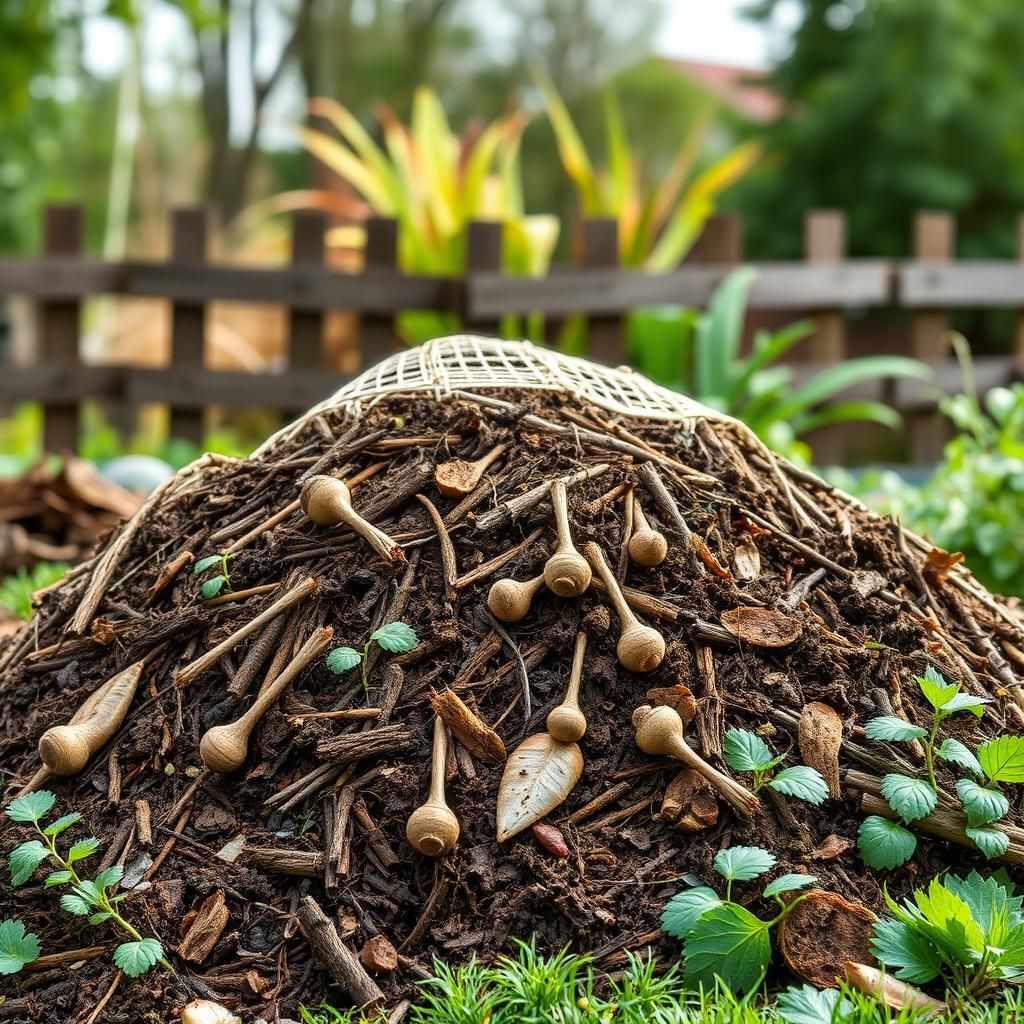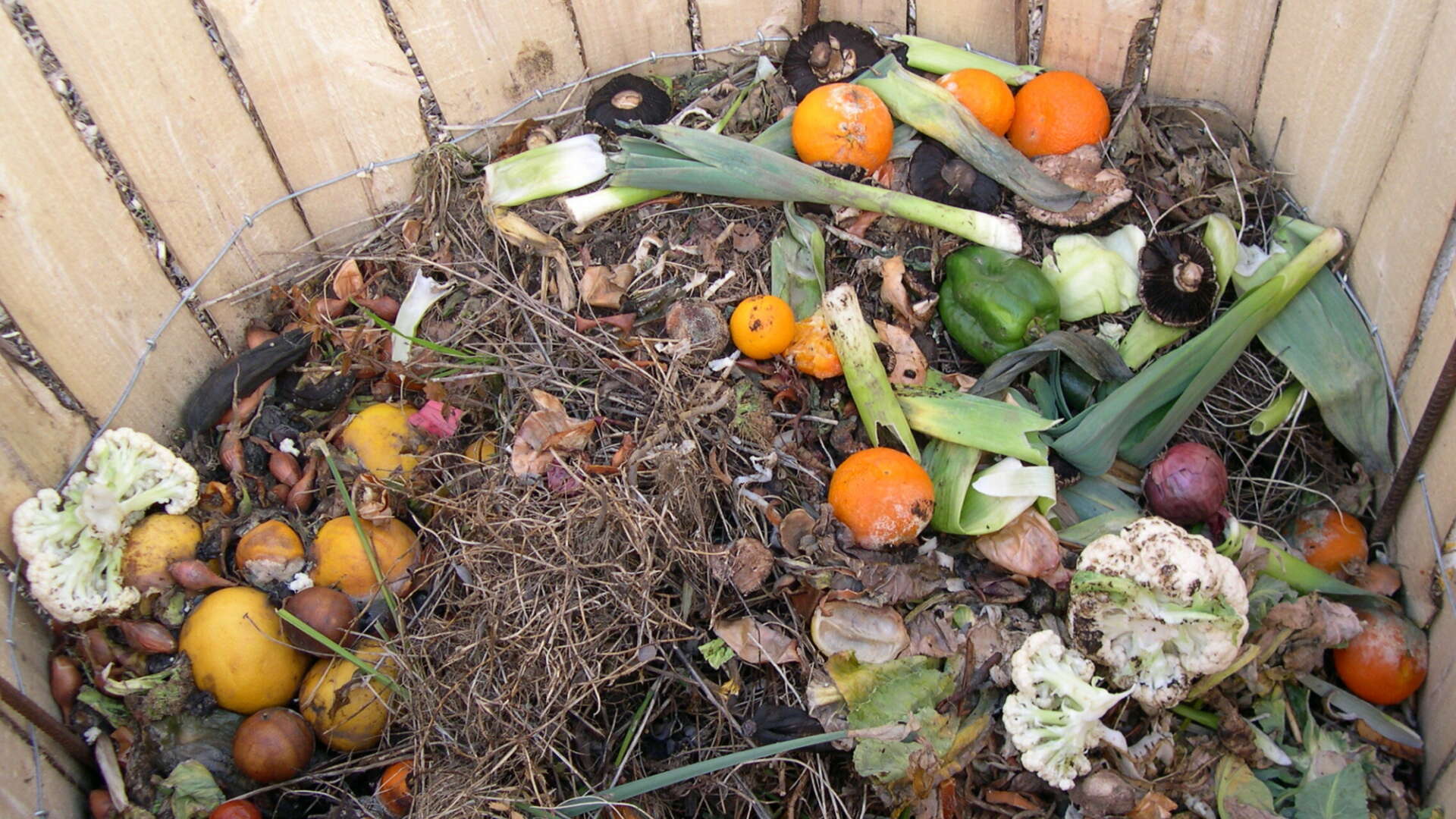Is a Compost Pile Better Than a Bin? Discover the Pros and Cons for Your Garden

When it comes to composting, gardeners often face the dilemma of choosing between a compost pile and a compost bin. Both methods offer unique advantages and potential downsides that can influence the efficiency of your composting efforts. A compost pile typically allows for greater aeration and larger quantities of waste, while a compost bin provides a more contained and aesthetically pleasing option. Understanding the pros and cons of each method will help you make an informed decision tailored to your gardening needs. In this article, we’ll explore both options to determine which composting method is best for your garden.
- Is a Compost Pile Better than a Bin?
- Is it better to compost in a bin or open pile?
- What are the disadvantages of compost piles?
- What are the 5 mistakes that people commonly make when composting with worms?
- Mistake 1: Overfeeding the Worms
- Mistake 2: Using the Wrong Materials
- Mistake 3: Ignoring Moisture Levels
- Temperature significantly impacts worm health, and failing to maintain an appropriate range can cause stress or even death. Worms prefer temperatures between 55°F and 77°F (13°C to 25°C). If the worm bin gets too hot or too cold, it can become inhospitable for the worms. Use a thermometer to monitor the conditions, especially during extreme weather. Use a thermometer to check the bin's temperature regularly. Insulate the bin in colder months. Choose a shaded location for the bin in hot weather.Mistake 5: Neglecting pH Levels
- Is it safe to eat vegetables grown on a compost pile?
- Questions from Our Readers
Is a Compost Pile Better than a Bin?
When considering whether a compost pile is better than a compost bin, several factors come into play, including space, aeration, and management. A compost pile typically requires more space and may not be as visually appealing as a bin, but it allows for larger quantities of organic waste to decompose at once. The open design of a compost pile can enhance aeration, promoting quicker decomposition, while a bin can help contain odors and deter pests. Ultimately, the decision depends on individual circumstances such as available space, aesthetic preferences, and the volume of compostable material.
Advantages of a Compost Pile
One of the main advantages of a compost pile is its size; it can accommodate large amounts of organic materials without the restrictions that come with bins. This means that users can dispose of substantial green waste, such as grass clippings and fallen leaves, efficiently. Additionally, compost piles allow for better aeration, which can speed up the decomposition process and lead to high-quality compost, making it ideal for gardening enthusiasts with ample space.
Benefits of Using a Compost Bin
Compost bins offer several benefits, particularly for those who have limited space. They are typically more compact and enclosed, which helps manage odors and prevents pests from invading the materials. Additionally, many compost bins feature a design that facilitates turning the compost, which can help blend materials and enhance decomposition. The aesthetic appeal of a bin can also be an important factor for individuals living in neighborhoods or areas where appearance matters.
Aeration in Composting
Aeration is a crucial process in composting that affects the rate of decomposition. With a compost pile, the natural airflow allows for better aeration, which is conducive to aerobic bacteria, leading to faster breakdown of the materials. In contrast, compost bins may limit airflow unless they have specific vents or features designed for aeration. Therefore, individuals prioritizing efficient composting may find that a pile suits their needs better due to this enhanced oxygen circulation.
Maintenance Requirements
The maintenance of a compost pile is often less labor-intensive than that of a compost bin. In a pile, you can easily add new materials without having to disassemble or open a structure. However, regular turning is still necessary to mix materials and promote decomposition. Compost bins, while often easier to manage when it comes to odors and aesthetics, may require more attention, like periodic turning and ensuring the moisture level is adequate, which can be more cumbersome for users.
Space Considerations
When deciding between a compost pile and a compost bin, space is a significant factor. If you have a large yard or garden, a compost pile can be a practical choice that utilizes more area and allows for larger volumes of organic waste. Conversely, those with limited outdoor space, such as apartment dwellers or urban residents, will likely benefit more from a compost bin that can fit into smaller areas while still offering effective composting capabilities without taking up too much room.
| Feature | Compost Pile | Compost Bin |
|---|---|---|
| Size | Typically larger | More compact |
| Aeration | Better airflow | May require vents |
| Maintenance | Less labor-intensive | More regular attention |
| Odor Control | Less effective | More effective |
| Space Requirement | Requires more space | Requires less space |
Is it better to compost in a bin or open pile?

When deciding whether it is better to compost in a bin or an open pile, several factors come into play. Both methods have their advantages and disadvantages, which can influence a gardener's or homeowner's choice based on their specific circumstances. Below are detailed explanations of both composting methods.
Advantages of Composting in a Bin
Composting in a bin offers numerous benefits that can streamline the composting process and provide a more organized approach.
- Controlled Environment: A bin can create a more stable microclimate, which helps maintain optimal conditions for decomposition.
- Odor Reduction: Enclosed bins often limit odors as the material is contained, minimizing the risk of attracting pests.
- Better Aesthetics: Compost bins are typically neater and more visually appealing than an open pile, making them suitable for residential areas.
Disadvantages of Composting in a Bin
Despite its advantages, there are some drawbacks to using a compost bin that potential users should consider.
- Cost: Compost bins can require an initial investment, which may be a barrier for some individuals.
- Limited Volume: Some bins can be restrictive in terms of size, limiting the amount of material you can compost at once.
- Maintenance: Bins may need regular turning or aeration, which can require more effort compared to an open pile.
Benefits of an Open Pile
Composting in an open pile has its own set of benefits that can appeal to those looking for a more traditional approach.
See also:
- Simplicity: Creating an open pile is often as easy as finding a designated spot in the yard, with no need for special equipment.
- Larger Capacity: Open piles can accommodate larger quantities of organic material, making it easier to compost substantial kitchen scraps and yard waste.
- Encourages Wildlife: An open pile may attract beneficial organisms like worms and microorganisms that enhance the composting process.
Drawbacks of an Open Pile
While there are advantages to composting in an open pile, it also has several downsides that should be taken into account.
- Odor Issues: An open pile is more likely to produce unpleasant smells, especially if not managed properly, which can deter nearby residents.
- Pest Attraction: Open piles may attract unwanted pests, such as rodents or insects, making maintenance more challenging.
- Less Control: The exposure to the elements can make it harder to regulate moisture and temperature, potentially slowing down the decomposition process.
Environmental Considerations
Choosing between a bin and an open pile can also have implications for environmental sustainability and the carbon footprint.
- Carbon Sequestration: Composting in either method can contribute to carbon sequestration and help combat climate change, though bins may be more efficient given the controlled environment.
- Waste Reduction: Both methods reduce organic waste sent to landfills, but the method chosen affects speed and efficacy.
- Soil Health: Both open piles and bins can lead to nutrient-rich compost that benefits plant health and soil quality.
What are the disadvantages of compost piles?

Composting is widely recognized for its environmental benefits, but it also comes with several disadvantages that potential composters should consider. Below are a few key drawbacks associated with compost piles.
Insufficient Space
One of the primary issues with compost piles is the requirement for space. Proper composting needs a designated area where organic materials can decompose effectively. This can be a significant concern for individuals with limited outdoor space or those living in urban environments. The lack of adequate space may lead to several challenges:
- Reduced composting efficiency: A crowded compost pile may not allow for proper aeration and breakdown of materials.
- Odor issues: When space is limited, compost materials might become compacted, leading to unpleasant smells.
- Potential for pests: Overcrowded areas can attract unwanted pests, such as rodents and insects.
Maintenance Challenges
Maintaining a compost pile requires regular attention and effort. Without proper maintenance, the composting process can become ineffective or even detrimental:
- Frequent turning: Compost needs to be turned regularly to aerate the materials and promote decomposition.
- Monitoring moisture: Maintaining the right moisture level is crucial, requiring ongoing attention to prevent the pile from drying out or becoming too wet.
- Odor control: Regular maintenance is needed to keep odors in check, which can become bothersome if overlooked.
Pest Attraction
A compost pile can inadvertently become a haven for pests if not managed properly. Many organic materials used in composting may attract various insects and other unwanted wildlife:
- Rodents: Food scraps, especially grains and fruits, can lure mice and rats if compost is not adequately turned or covered.
- Insects: Flies and ants may be attracted to decomposing materials, leading to hygiene concerns.
- Animal interference: Larger animals such as raccoons can also be drawn to compost piles if there are no barriers in place.
Time-Consuming Process
Composting is often perceived as a quick and easy method to recycle waste, but in reality, it can be quite time-consuming. Several factors contribute to this extended timeline:
- Decomposition speed: The rate at which materials decompose can vary significantly depending on temperature, moisture, and the composition of the pile.
- Layering techniques: Following proper layering techniques requires knowledge and patience, as each layer must be balanced for effective composting.
- Seasonal variations: Cold weather can slow down the composting process, leading to delays in turning yard waste into usable compost.
Quality of Finished Compost
The quality of compost produced can vary depending on how well the compost pile is managed during the decomposition process. Several factors can affect its overall quality:
- Contamination: If non-compostable materials are inadvertently included, the final product may be harmful to plants.
- Inadequate breakdown: Poor maintenance can result in partially decomposed materials that are not suitable for use in gardening or landscaping.
- Nutrient imbalance: A poorly managed compost pile may lack essential nutrients, affecting its efficacy as a soil amendment.
What are the 5 mistakes that people commonly make when composting with worms?

Mistake 1: Overfeeding the Worms
One common mistake made in worm composting is overfeeding the worms. Providing too much food can lead to the creation of an anaerobic environment, which can produce unpleasant odors and attract pests. To avoid this issue, it's important to feed your worms gradually and monitor their consumption. If you notice that there's leftover food after a week, it may be a signal to reduce the amount you provide.
- Monitor the amount of food you add.
- Remove uneaten food to prevent odors.
- Feed in small quantities, gradually increasing as the worms adjust.
Mistake 2: Using the Wrong Materials
Choosing inappropriate materials for composting can severely affect the health of the worms. Materials that are too acidic or contain oils can be detrimental. It's crucial to use the correct green and brown materials, such as vegetable scraps, coffee grounds, cardboard, and shredded paper. Always ensure that you avoid items like meat, dairy, and oily foods.
See also:
- Stick to vegetable scraps and plant-based materials.
- Avoid meat, dairy, and oily residues.
- Incorporate a balanced mix of greens and browns.
Mistake 3: Ignoring Moisture Levels
Another frequent mistake is neglecting the moisture levels in the worm bin. Worms thrive in a moist environment; however, too much moisture can lead to a soggy habitat that is unsuitable for worms. Always check that the bedding is damp but not drenched, akin to a wrung-out sponge.
- Regularly inspect the moisture level of the bedding.
- Add dry materials to absorb excess moisture.
- Ensure proper drainage in the worm bin.
Temperature significantly impacts worm health, and failing to maintain an appropriate range can cause stress or even death. Worms prefer temperatures between 55°F and 77°F (13°C to 25°C). If the worm bin gets too hot or too cold, it can become inhospitable for the worms. Use a thermometer to monitor the conditions, especially during extreme weather.
- Use a thermometer to check the bin's temperature regularly.
- Insulate the bin in colder months.
- Choose a shaded location for the bin in hot weather.
Mistake 5: Neglecting pH Levels
pH levels in the compost bin are crucial for the overall health of the worms. A highly acidic or highly alkaline environment can harm the worms and disrupt the composting process. It’s important to keep the pH level around neutral (6.5-7.5). You can monitor and adjust pH using crushed eggshells or lime for alkalinity and coffee grounds for acidity.
- Test the pH of the compost regularly.
- Add amendments to balance the pH when needed.
- Use a variety of materials to maintain a balanced environment.
Is it safe to eat vegetables grown on a compost pile?

Eating vegetables grown on a compost pile can be safe, but various factors must be considered to ensure food safety. Compost piles can be rich in nutrients and beneficial microorganisms, making them ideal for growing vegetables. However, they can also harbor pathogens or contaminants that pose health risks. Therefore, several precautions are necessary to minimize these risks.
Understanding Compost Composition
Vegetable safety largely depends on the materials used in the compost pile. It is crucial to understand the composition of your compost to assess safety levels.
- Animal Products: Avoid adding meat, dairy, or any animal products, as they may introduce harmful bacteria.
- Yard Waste: Use plant-based materials only, ensuring no pesticides or chemicals that can contaminate crops.
- Manure: If using manure, ensure it is well-composted to kill harmful pathogens before planting.
Temperature Control in Composting
An effective composting process should reach high temperatures to kill pathogens. This temperature control can significantly enhance the safety of vegetables grown from compost.
- Thermophilic Stage: The pile should reach temperatures of at least 140°F (60°C) for several days to eliminate harmful organisms.
- Monitoring: Regularly check and manage the compost pile’s temperature to ensure it remains within safe limits.
- Turning the Pile: Regularly turning the compost helps promote even heating and aeration, aiding in pathogen reduction.
Washing and Cooking Vegetables
Even if vegetables are grown in a compost pile deemed safe, it’s vital to practice proper hygiene before consumption.
- Washing: Thoroughly wash all vegetables under running water to remove soil, microorganisms, and possible contaminants.
- Peeling: For certain vegetables, peeling can provide an extra layer of safety by removing any potential surface contaminants.
- Cooking: Cooking vegetables can significantly reduce health risks by killing any remaining pathogens.
Choosing the Right Vegetables
Some vegetables are more resilient and better suited to being grown in compost than others. Understanding which crops to grow can directly affect safety.
- Leafy Greens: Generally, they have a higher risk of contamination and should be grown with caution.
- Root Vegetables: Often safer, as they grow deeper in the soil, away from the top layer of compost.
- Fruiting Vegetables: Plants like tomatoes or peppers can be good options as they typically contact less soil during growth.
Local Regulations and Best Practices
Local regulations may offer guidance on composting practices, which can influence the safety of consuming vegetables.
- Composting Guidelines: Familiarize yourself with local composting regulations, as these can provide valuable safety information.
- Testing Soil: Conduct soil tests to check for contaminants, especially if using compost from various sources.
- Best Practices: Stay informed about best practices in home gardening and composting for optimal food safety.
Questions from Our Readers
Is a compost pile better than a bin for space-saving?
A compost pile can be more beneficial than a bin if you have ample space in your yard. While piles can take up more area, they often allow for greater airflow and easier turning, which can speed up the composting process. However, in smaller gardens, a bin may be more practical for limiting space.
Does a compost bin produce compost faster than a pile?
Generally, a compost bin can create compost more quickly than a pile, especially if it is designed for efficiency. Bins typically retain heat and moisture better, facilitating a faster breakdown of materials. However, with proper care, a pile can also achieve efficient composting.
See also:
Are there any drawbacks to using a compost pile over a bin?
One potential drawback of using a compost pile is that it can attract pests more easily than a bin, which often has a more contained structure. Additionally, piles may require more regular management to ensure materials are mixed and decomposed evenly, while bins can simplify that process.
Which option is better for beginners: compost pile or bin?
For beginners, a compost bin may be a better choice as it provides a more structured environment that can simplify the composting process. Bins typically come with guidelines for maintenance and can help prevent common issues such as odor or pest problems, making it an ideal starting point for new composters.

If you want to read more articles like Is a Compost Pile Better Than a Bin? Discover the Pros and Cons for Your Garden, we recommend you check out our Compost category.
Leave a Reply
Related Articles